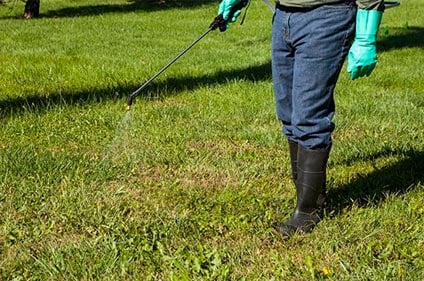Most notably and often targeted Crabgrass and Goosegrass are at the top of that category. Crabgrass begins germination when soil temperatures are maintained over 50 – 55 degrees at a depth of 2 inches. Goosegrass comes along later and will start its germination process at 60 – 65 degrees.
The easiest way to control these two problems are with pre-emergent herbicides. Most products will also control some other broadleaf weeds in the process keeping lawns cleaner into the spring. If this step is overlooked, these weeds become a bigger challenge to handle later in the season.
Pre-emergent herbicides interfere with germination and emergence which will prevent these weeds from being noticed. These materials, once watered in, will create a "barrier" of herbicide, preventing newly germinated weeds from emerging.
There are numerous classes of chemistry each having specific advantages and disadvantages. Some things to consider are whether you want to spread or spray, what types of property you'll be treating – residential or commercial. There are plenty of options, so don’t forget to ask about which products are best for your situation.
Contact the Ewing Technical Services Team for suggestions. You can also review this Pre-emergent Resource from the Texas A&M AgriLife Extension.




